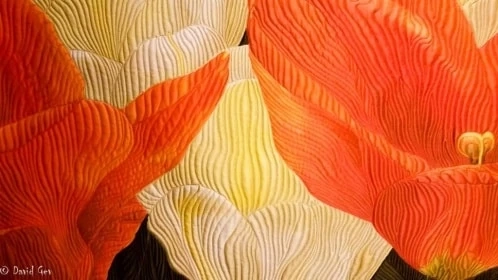A Journey of Beauty, Patience, and Creativity
She sat still, I thought, and yet she traveled. And when one stitch, the mind travels, not the way men do, with ax and oxen through the wilderness, but surely our traveling counted too, as motion. And I thought of the patience of the stitches. Writing a book, I thought, which men often do, but women only rarely, has the posture of sewing. One hand leads, and the other hand helps. And books, like quilts, are made, one word at a time, one stitch at a time. – Sena Jeter Naslund
In the winter of 2018, I had the pleasure of accompanying Sandra and Burt Sigal to an art quilt exhibition at the California Heritage Museum in Santa Monica. As we walked into the charming house, I was struck by the beauty of the colorful quilts on display. I had driven past this house countless times before, never realizing the hidden treasure inside. Read more at The Art of Quilting: An Exquisite Odyssey of Patience and Beauty for more details.
Sandra Sigal, a master quilter herself, led us through the exhibit with expertise and grace. Her knowledge of the intricate techniques and methods of construction used in the quilts was captivating. As I listened to her explanations, memories of my childhood flooded back to me. I remembered watching my mother sew and create fashionable garments with such ease.
The Origins of Quilting
Quilting, an ancient art form, traces its origins back to ancient Egypt and China. The earliest known quilted garment dates back to around 3400 BC, discovered in a Mongolian cave. Throughout history, quilting has served both functional and artistic purposes, from providing warmth to expressing creativity and storytelling.
The Artistry of Quilting
Quilting is more than just sewing pieces of fabric together; it is a form of artistic expression. Quilters carefully select fabrics, colors, and patterns to create visually stunning compositions. Each quilt tells a story, whether it\'s a traditional pattern passed down through generations or a contemporary design inspired by nature or modern life.
The Patience of a Quilter
Patience is perhaps the most essential trait of a quilter. Unlike other forms of art, quilting requires meticulous attention to detail and a willingness to embrace the slow, deliberate process. Each stitch is a testament to the quilter\'s patience and dedication, as they work tirelessly to bring their vision to life.
The Beauty of Imperfection
One of the most beautiful aspects of quilting is its embrace of imperfection. Quilts are often handmade, meaning that no two are exactly alike. Quilters celebrate the quirks and irregularities that make each quilt unique, adding to its charm and character.
The Therapeutic Power of Quilting
Beyond its aesthetic appeal, quilting also offers numerous therapeutic benefits. Many quilters describe the act of sewing as meditative, allowing them to relax and unwind while engaging in a creative pursuit. Quilting can also foster a sense of community, as quilters come together to share techniques, patterns, and stories.
Conclusion
The art of quilting is a journey of beauty, patience, and creativity. From its ancient origins to its modern-day resurgence, quilting continues to captivate and inspire people around the world. As we admire the intricate stitches and vibrant colors of a quilt, let us pause to appreciate the skill, dedication, and artistry that went into its creation. And perhaps, in doing so, we may find inspiration to embark on our own quilting odyssey.




